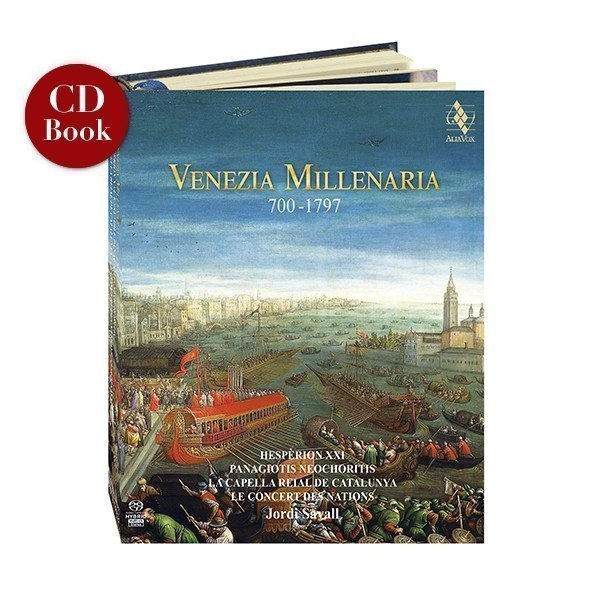VENEZIA MILLENARIA
700-1797
Hespèrion XXI, Jordi Savall, La Capella Reial de Catalunya, Le Concert des Nations
32,99€
Reference: AVSA9925
For approximately a thousand years, from 700 to 1797, the city of Venice played a pre-eminent role in the Mediterranean and in the history of the world. Situated in a lagoon fed by two rivers where a number of small, precarious settlements had grown up along the coast, Venice was founded by the Byzantines, who made it a crossroads between the East and the West. This essentially aquatic city, with its network of canals, attracted merchants of many different origins who worked towards a common goal: to create a thriving hub of business, exchange and interests.
The city gradually developed a trade in goods from the East (spices, silks, precious metals, luxury items) to the West, which were exchanged for other goods and commodities (such as salt and timber) bound for the East.
MILLENNIAL VENICE
700-1797
For approximately a thousand years, from 770 to 1797, the city of Venice played a pre-eminent role in the Mediterranean and in the history of the world. Situated in a lagoon fed by two rivers where a number of small, precarious settlements had grown up along the coast, Venice was founded by the Byzantines, who made it a crossroads between the East and the West. This essentially aquatic city, with its network of canals, attracted merchants of many different origins who worked towards a common goal: to create a thriving hub of business, exchange and interests. The city gradually developed a trade in goods from the East (spices, silks, precious metals, luxury items) to the West, which were exchanged for other goods and commodities (such as salt and timber) bound for the East.
By setting up a “Republic” in which the system of government by an oligarchy led and represented by an elected life Doge, Venice gradually gained independence from the Byzantines, eventually becoming more of a trading partner than a vassal.
+ information in the CD booklet
JORDI SAVALL
Bellaterra, 2 October, 2017
Translated by Jaqueline Minett







Share